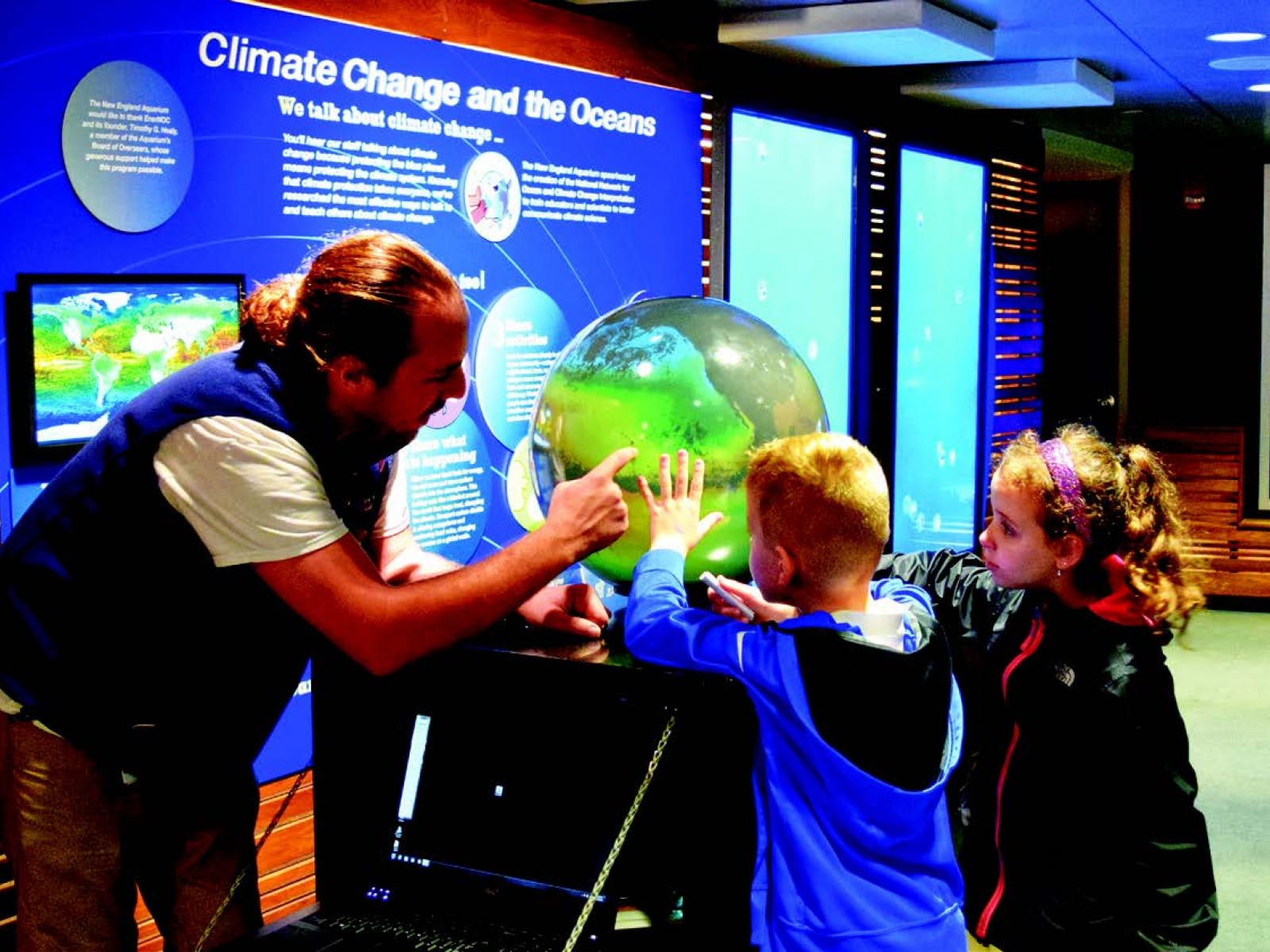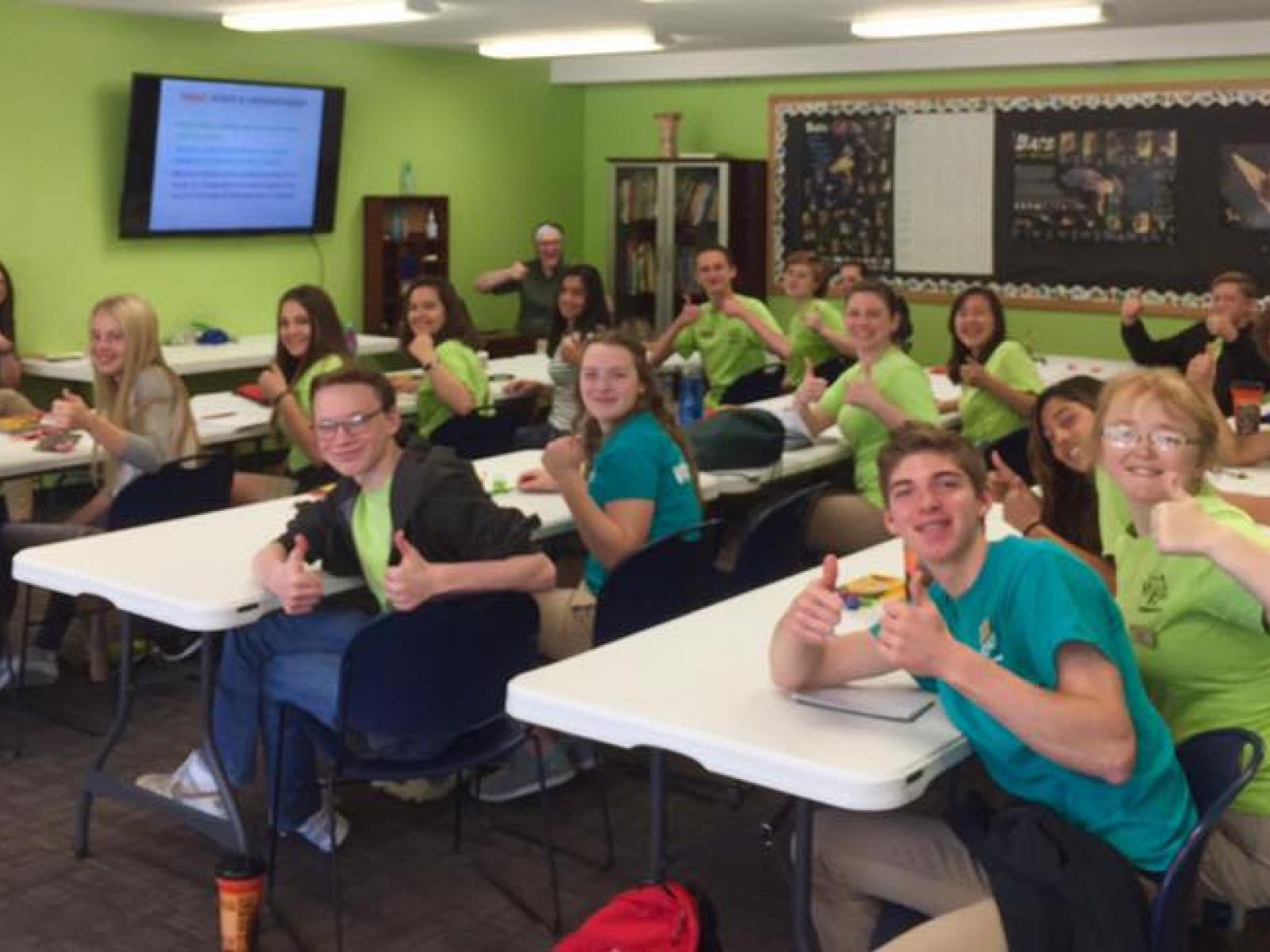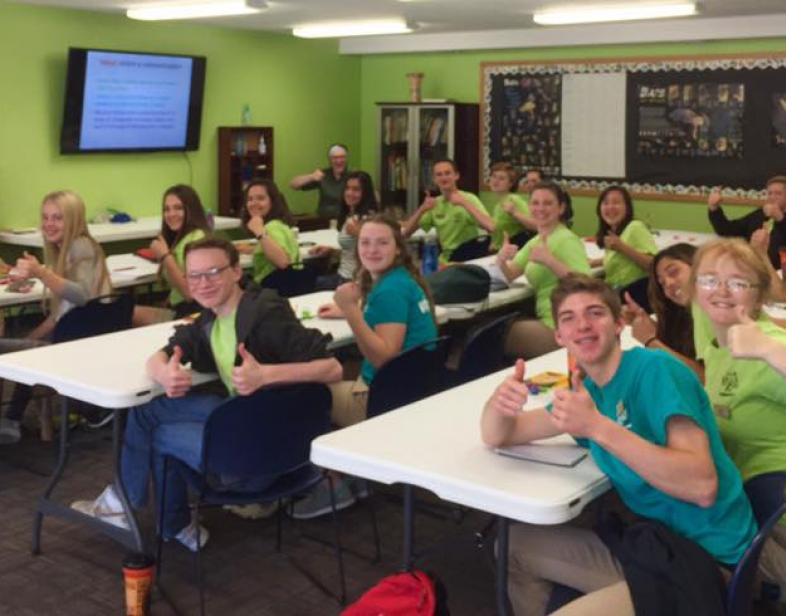An Overview Of Our Solution
The National Network for Ocean and Climate Change Interpretation (NNOCCI) is a network of individuals and organizations in informal education, social science, and climate science working in 170 science centers in 38 states. We leverage the broad reach and public trust in our institutions to engage Americans in climate action and teach them to share effective messages. We train environmental educators and climate scientists to use Strategic Framing® communication techniques to educate people about the importance of climate change, its causes and challenges, and to engage in community-level action. Visitors to science centers in the NNOCCI network are significantly more likely to participate in civic action to reduce climate change. NNOCCI can be scaled because we teach framing techniques which educators can adapt to resonate with their specific communities.
- Population Impacted: 183 million visitors to US zoos and aquariums
- Continent: North America
Context Analysis
Climate change is one of the most important issues of our time and Americans feel overwhelmed by it. The Yale Project on Climate Communication found 64% of Americans discuss climate change only occasionally or never. We must increase Americans’ understanding and communication about climate change to drive community-level change. The National Network for Ocean and Climate Change Interpretation (NNOCCI), part of the New England Aquarium, is a network of individuals and organizations in informal education, social science, and climate science working in 170 science centers in 38 states. We leverage the broad reach and public trust in our institutions to engage Americans in climate action and teach them to share effective messages. We are committed to evidence-based communication and provide social/emotional support to engage as climate communicators. By collaborating, we develop knowledge, techniques, and confidence to change public discourse and empower our audiences to take civic action.
Describe the technical solution you wanted the target audience to adopt
NNOCCI believes that we need increased effective public discourse about climate change to overcome obstacles to advancing civic climate action. Our strategy is to build communications capacity by training and networking staff at widely trusted institutions such as aquariums, zoos and other informal science learning centers. As a result, visitors to science centers in the NNOCCI network (compared to those who have visited science centers outside our network) are significantly more:
• Knowledgeable about climate change science
• Hopeful that we can solve climate change challenges
• Confident talking about climate change with others
• Likely to believe that talking with civic leaders lead to community level change
• Likely to engage in community-level civic action to address climate change.
Type of intervention
Describe your behavioral intervention
To get more people talking about climate change in a positive, civic-minded, and solutions-focused manner, we need to ensure that communicators with broad audiences use their platforms effectively. NNOCCI uses a train-the-trainer model in which we invite pairs of colleagues from science centers to a 70-hour course, which engages them in the social science and climate science behind effective climate communication. Graduates of these workshops become part of our network who then implement new messaging techniques at their institutions and train volunteers, staff, and community partners to communicate using NNOCCI’s proven, evidence-based method. Network members receive continued support via webinars, network newsletters, and online social groups to share their successes and innovations, incorporate the latest science, ask for help, and improve our collective practice. NNOCCI workshops are free to interested educators and climate scientists. We never have a shortage of applicants, as word of mouth is very strong in the networks we serve. Feeling hopeful, empowered, and effective makes a difference is what drives people to our courses. Since its inception in 2009, NNOCCI has trained 400 individuals, who have, in turn, trained more than 38,000 people to use NNOCCI’s communication techniques. NNOCCI members also build exhibits, create educational programming, foster community partnerships, and develop trainings that engage millions of Americans in climate conversations every day.
As needed, please explain the type of intervention in more detail
NNOCCI approaches our intervention through an evidence-based lens. We leverage our partnership with The Frameworks Institute to ensure that techniques are grounded in research and pressure-tested. We have partnered with Woods Hole Oceanographic Institute to ensure a pipeline and access to climate scientists and the latest research. We are also deliberate in evaluating the effect of the courses – both with the participants and with their audiences – and have undertaken two national surveys to confirm that our approach is working on a national scale. These surveys have shown us that NNOCCI has inspired community-level change across the country.
Describe your implementation
NNOCCI trains environmental educators and climate scientists to use Strategic Framing® communication techniques to educate people about the importance of climate change, its causes and challenges, and to engage in community-level action. Evaluation data show visitors exposed to NNOCCI framing are significantly more likely to participate in civic action to reduce climate change. Additional visitor outcomes include significantly improved understanding of the causes and challenges of climate change, greater hope about addressing climate challenges in their communities, and belief that talking about climate change makes a difference. Our evaluation also shows visitors are looking to us as unbiased experts.
Our approach combines peer-to-peer teaching, group learning, and membership in a Community of Practice to build members’ ideas of self-efficacy. Before NNOCCI, many environmental educators were not using their platforms effectively. They were often overcome by stress due to fear of confrontation and overwhelmed at how to convey climate change succinctly. When working directly with audiences, educators often perceive others do not share their commitment to environmental values and actions, which can be upsetting and leads to feeling isolated. These challenges make an educator less likely to raise the topic of climate action, reinforcing self-silencing that Americans are concerned, but not talking about climate change.
The social/emotional aspects of this network increases educators’ hope and decreases their panic about the environment. This renewed hope, improved science knowledge, and new communications techniques directly correlate with improved messaging effectiveness, which greatly improves a visitor’s understanding of the science behind climate change and the sense of hope that people can find climate solutions. Both of these factors have a direct and strong correlation to a visitor being more likely to take community-level action to solve climate change.
External connections
NNOCCI’s network structure empowers members to support and complement each other’s skills. In addition to the 170+ informal science centers in our network, our strategic partners are:
• Monterey Bay Aquarium: leads social media strategy, coalition-building expertise, and updating and managing NNOCCI’s website,
Climateinterpreter.org
• FrameWorks Institute: ensures integrity of strategic framing content in training materials and activities
• New Knowledge Organization: assesses and evaluates NNOCCI’s impact in the community
• Association of Zoos and Aquariums (AZA): ensures alignment between NNOCCI and AZA initiatives, advises on best practices for
structuring professional development for informal educators, and facilitates dissemination to AZA member institutions
• Woods Hole Oceanographic Institute: ensures the integrity of climate science content and dissemination to climate scientists.
Who adopted the desired behaviors and to what degree?
As mentioned above, visitors to informal science centers in the NNOCCI network adopted significant behavioral change. As shown in ”Catalyzing Public Engagement with Climate Change Through Informal Science Learning Centers” in the journal of Science Communication, these visitors, compared visitors to science centers outside the NNOCCI network, are significantly more likely to participate in civic action to reduce climate change. Examples of these civic actions include engaging local policy makers, joining a local climate action organization, donating to an organization addressing climate change, voting for candidates who pledge to address climate change, signing petitions, and personal activities such driving less and purchasing energy efficient appliances. Positive impacts created by these NNOCCI-inspired civic leaders illustrate how NNOCCI can effect on-the-ground, community level change by changing the conversation around climate change.
How did you impact natural resource use and greenhouse gas emissions?
Because NNOCCI focuses on creating productive discussions around climate change to inspire educators, scientists, visitors, and others to engage in community-level civic action, we do not directly measure our impact on natural resource use and greenhouse gas emissions. As mentioned above, however, we do measure our influence on visitors and their actions. As ”Catalyzing Public Engagement with Climate Change Through Informal Science Learning Centers” shows, a strong correlation exists between visiting a science centers in the NNOCCI network and engaging in community-level and personal behaviors that are known to decrease natural resource use and greenhouse gas emissions. The most striking examples of community-level behaviors are engaging local policy makers, joining a local climate action organization, and donating to an organization addressing climate change. On the personal level, visitors to science centers in the NNOCCI network drive less and buy energy efficient appliances.
What were some of the resulting co-benefits?
Evaluation data show that, compared to their peers at other informal science centers, NNOCCI-trained educators report significantly increased confidence communicating science information to visitors, contributions to journal articles focused on climate education issues, and collaboration within and outside their teams on climate-focused projects. As an educator recently said, “NNOCCI has completely changed the way I approach communicating our agency’s research and mission. I feel more confident in my abilities to communicate complex and controversial subjects as a result of my NNOCCI training.”
We have also seen NNOCCI-trained educators apply the strategic framing lessons we have taught them to other teaching opportunities. As another educator said recently, “We decided to use NNOCCI strategic framing for all of our educational activities because we found it is much more successful in motivating interpreters and visitors than what we were doing before.”
Sustainability
NNOCCI launched in 2009 with support from the National Science Foundation (NSF). As our original NSF grant winds down in 2018, we have shifted our funding strategy to include new federal grants, private foundations, corporate sponsorships, and individual donations. Our supporters include:
• An anonymous individual donor
• Association of Zoos and Aquariums
• Cabot Corporation
• EnerNoc
• Monterey Bay Aquarium
• National Science Foundation
• NOAA
• Pisces Foundation.
To ensure we are able to continue to expand and deepen NNOCCI’s reach, we continue to seek additional funding streams and have established a robust partnership with Monterey Bay Aquarium’s development team to implement a collaborative fundraising strategy.
Return on investment
NNOCCI’s 2018 budget of $650,000 illustrates a high return on investment due to our outsized results, which include:
• 170+ informal science institutions across the country
• 400 individual members
• 38,000 informal educators trained by NNOCCI member educators
• 183 million visitor interactions per year
• Visitors exposed to NNOCCI framing techniques are significantly more likely to participate in civic action to reduce climate change
• Visitors exposed to NNOCCI framing techniques report significantly improved understanding of the causes of and challenges created by climate change, greater hope about addressing climate challenges in their communities, and belief that talking about climate change makes a difference.
How could we successfully replicate this solution elsewhere?
NNOCCI is uniquely positioned to have an impact at a national scale because, in an era of increased partisanship and decreased confidence in experts, research shows that the public trusts informal science centers at a much higher rate than other institutions. In addition, we teach framing techniques, not a script, which environmental educators can adapt to resonate best with their communities. In the next five years, we believe we can increase our reach from just over 10% to 75% of informal science centers.
Potential partners include the North American Association for Environmental Education, National Informal STEM Education Network, NOAA, and the National Association for Interpretation. Another example is partnering with key community influencers to collaborate on communication strategies.
It will cost $125,000 per year to achieve this growth, which is included in our budget number above. Key expenses include new partner meetings, additional training workshops, and travel.






